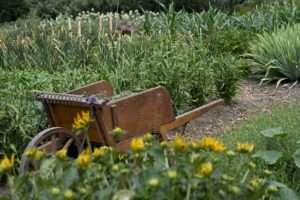Understanding Planting Zones

Understanding planting zones helps gardeners choose plants that can thrive in their local climate conditions for a vibrant, flourishing garden.
Definition of Planting Zones
Planting zones, also known as growing zones or hardiness zones, are geographic areas that can be used to determine climatic conditions and identify which plants are able to grow in a specific location. They were created by the United States Department of Agriculture (USDA) in order to help gardeners and growers make informed decisions about what plants will thrive in their area.
Importance of Planting Zones in Gardening
Planting zones are crucial for successful gardening because they provide valuable information about the climate of a particular location. Different plants have different temperature and climate requirements, and planting zones help gardeners determine which plants will do well in their area. This allows gardeners to choose plants that are suitable for their specific climate, thereby increasing the chances of success in their garden.
Different Types of Planting Zones
Hardiness Zones
Hardiness zones are the most commonly used planting zones and were created by the USDA. They are based on the average annual minimum temperature in a given area and range from 1a (coldest) to 13b (warmest).
Heat Zones
Heat zones, also known as thermal belts, take into account both temperature and humidity levels in an area. They were created by the American Horticultural Society and range from 1 (coolest) to 12 (warmest). Heat zones are particularly important for plants that require both warmth and high humidity to thrive.
Sunset Zones
Sunset zones, developed by the Sunset Publishing Corporation, take into account a variety of factors such as temperature, elevation, topography, and proximity to bodies of water. They are primarily used in the Western United States and range from 1 (coolest) to 45 (warmest).
How to Determine Your Planting Zone
Using Online Tools and Maps
There are many online tools and maps available that allow gardeners to easily determine their planting zone. These tools usually require entering a zip code or city name to provide the corresponding planting zone.
Consulting with Local Experts
Gardeners can also consult with local experts, such as master gardeners or nursery staff, to determine their planting zone. These individuals have extensive knowledge about
Using Planting Zones in Garden Planning
Selecting Plants Suitable for Your Zone
Planting zones are an important factor to consider when selecting plants for your garden. It is crucial to choose plants that can thrive in your specific climate in order to increase the chances of success.
Timing Planting and Harvesting Based on Zone Information
Planting and harvesting times can vary greatly depending on the planting zone. By using this information, gardeners can ensure that they are planting at the optimal time for their specific climate.
Protecting Plants from Extreme Temperatures
Gardeners in colder zones may need to take extra precautions to protect their plants from frost or freezing temperatures. Similarly, gardeners in warmer zones may need to take measures to protect their plants from extreme heat.
Maximizing Growing Season
By understanding your planting zone, you can also plan and maximize your growing season. This means starting seeds or planting earlier in the season in warmer zones, and extending the growing season by using protective coverings or selecting cold-hardy varieties in colder zones.
Adjusting Gardening Techniques Based on Planting Zones
Watering Requirements
Different planting zones also come with varying moisture and irrigation needs. Gardeners need to adjust their watering schedules based on the rainfall patterns and temperature fluctuations of their zone. Drought-tolerant plants may be essential in arid climates, while plants in zones with abundant rainfall might require well-draining soil to prevent root rot.
Fertilizer Needs
The type of soil in a planting zone can dictate the kinds of nutrients required for optimal plant growth. Gardeners should have their soil tested and supplement it with the appropriate fertilizers to compensate for any deficiencies. This tailored approach helps in promoting healthy, vigorous plants.
Pest and Disease Management
Each planting zone harbors its own range of pests and diseases. Being aware of the common challenges in your zone allows for proactive management. Implementing integrated pest management (IPM) strategies and choosing disease-resistant plant varieties can minimize the impact of these environmental stressors.
Adapting to Changing Zones
Climate change is having a significant impact on planting zones, with many areas witnessing shifts in their zone classification. Warming temperatures may lead to zones moving northward, which requires gardeners to adjust their practices accordingly. Hardy plant varieties that once thrived in cooler climates may now struggle or require additional shading and watering to cope with the higher temperatures. Conversely, gardeners in traditionally cooler zones may have new opportunities to grow plants that were previously not viable in their area. To stay ahead of these shifts, continuous learning and flexibility in gardening practices are essential. Monitoring weather patterns, staying informed about local zone changes, and being willing to experiment with new plant varieties are all part of a resilient gardening strategy in the face of climate change.
Conclusion
In conclusion, understanding and working with planting zones is crucial for successful gardening. By selecting appropriate plant varieties, providing proper care and nutrition, and adapting to changing conditions, gardeners can create healthy and bountiful gardens in any zone. With diligence and a bit of trial and error, anyone can become a skilled gardener regardless of their geographic location. So go ahead and explore the possibilities of your own planting zone – you never know what beautiful plants and bountiful harvests await! Happy gardening!
Additional Resources
- United States Department of Agriculture (USDA) Plant Hardiness Zone Map: https://planthardiness.ars.usda.gov/
- National Gardening Association’s Plant Finder tool: https://garden.org/plants/search/
- Royal Horticultural Society’s Plant Selector tool: https://www.rhs.org.uk/plants/search-form
- Local garden clubs and nurseries for personalized advice and recommendations based on your specific zone and conditions.
